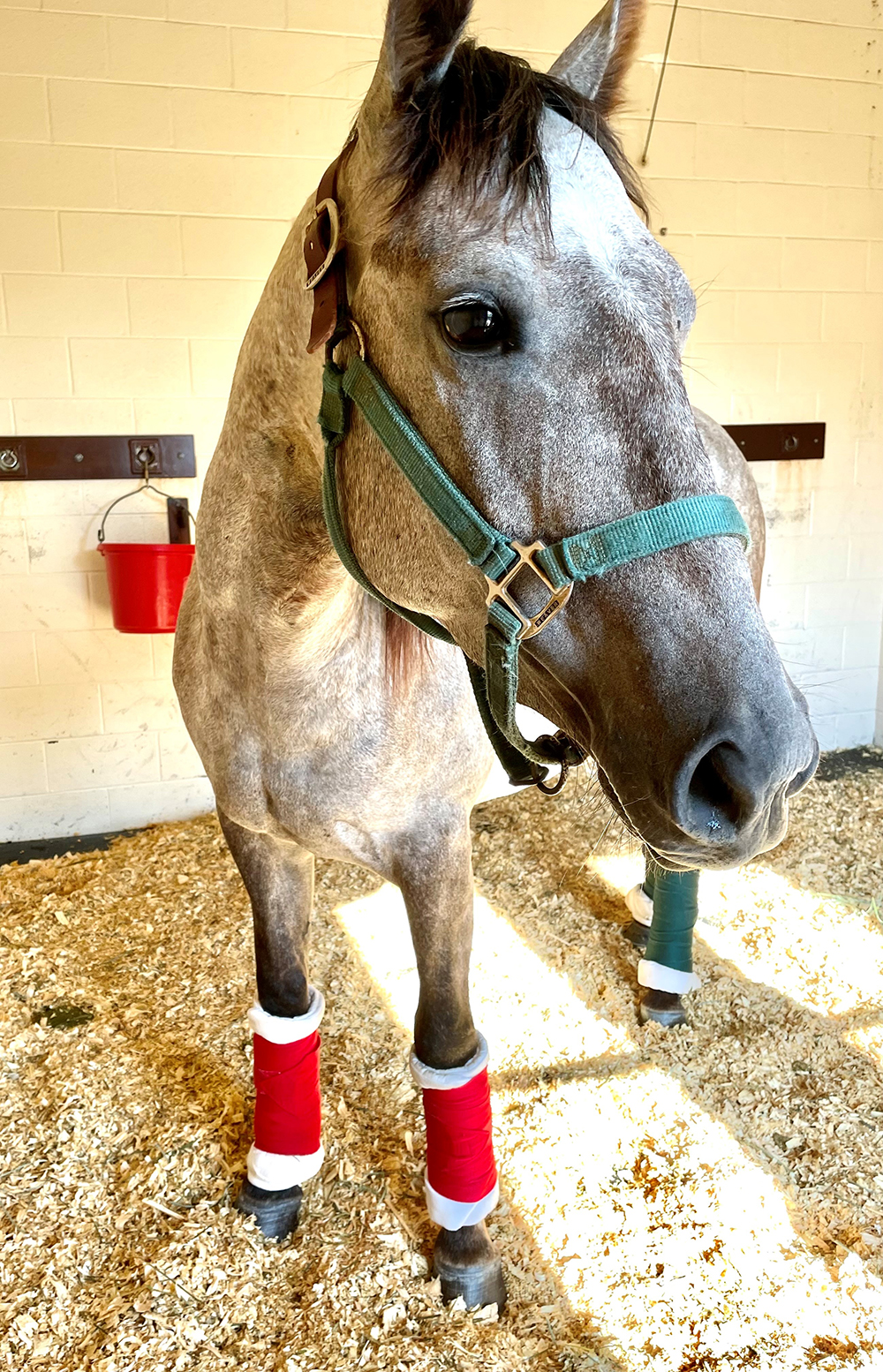Quarter horse mare Chickasaw Squaw consumes chicken feed, recovers after aggressive medical management
July 23, 2021

It’s no secret that horses can and do find trouble!
Chickasaw Squaw, a 5-year-old quarter horse mare whose stable name is Chic, visited the Equine Medical Center in July for an emergency appointment.
Owned by junior rider Eston and his dad, Todd Alexander, Chic and her stablemates raided the Alexanders’ grain storage and consumed not only horse feed, but also chicken feed, which is toxic to horses and can prove fatal.
The following morning, Chic was visibly uncomfortable. Her primary care veterinarian, Justin Sobota of South Mountain Equine, was called to the farm, and he worked on Chic to relieve her discomfort. After a nasogastric tube was passed and water, electrolytes, and anti-inflammatory medication were administered, there was no visible improvement to Chic’s comfort level, so she was referred to the Equine Medical Center for further diagnostics, treatment, and care.
Upon arrival, Chic was dull and clearly uncomfortable. Thorough examination by the center’s medicine team, led by medicine resident Stephanie Hernandez, and on-site diagnostic testing confirmed that Chic was suffering from systemic inflammation and endotoxemia, secondary to grain overload.
Chic’s temperature of 102.5°F landed her in the center’s biosafety level 2 isolation building, which offers overnight supportive care in a temperature-controlled environment conducive to the recovery of critically ill horses. Aggressive medical management was started: intravenous fluids, anti-endotoxin therapy, electrolyte supplementation, vitamin supplementation, anti-inflammatories, ice boots to prevent laminitis, and a stomach lavage.

By the following morning, Chic’s temperature, heart rate, and respiratory rate had normalized, and she was comfortable with no signs of colic or laminitis. Although she had not passed any manure overnight, she was much brighter and had a great appetite!
Chic was started on a gradual refeeding plan with small amounts of hay, and she continued to maintain a great appetite.
After three days, the intravenous fluid therapy was discontinued, and Chic was gradually weaned off anti-inflammatories. The following day, much to Eston’s delight, the mare was able to go home for continued rest and recuperation under his care.
“We are so happy and impressed with the care that Chic received. Dr. Hernandez was so good about keeping us informed and up to date on Chic’s progress,” Todd said. “It was obvious that Dr. Hernandez was truly concerned not only about her patient, but also our son Eston and how he was feeling. We can’t thank Dr. Hernandez and her staff enough.”



